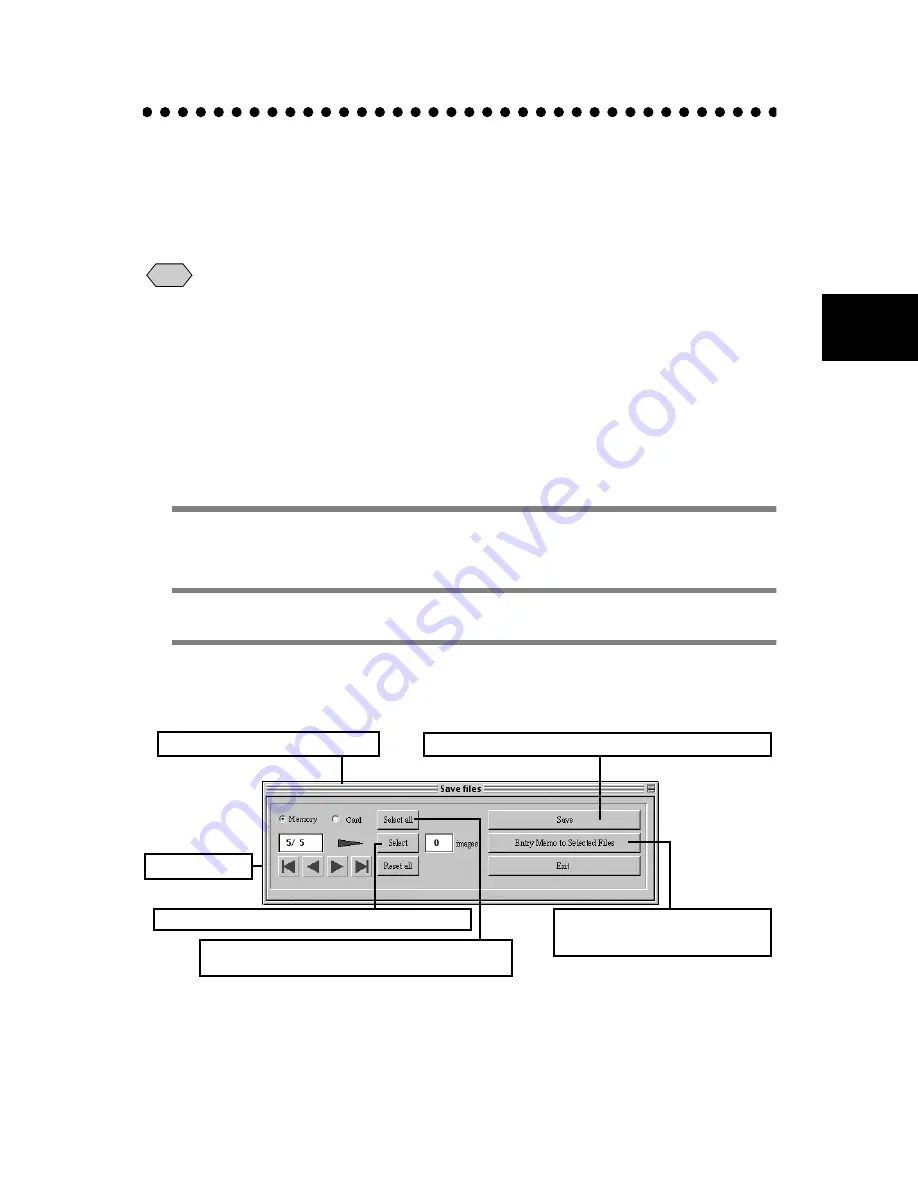
15
Using Caplio Utility
3
Saving Camera Files in the Macintosh
(Camera
➝
Macintosh)
You can save image, sound and motion picture files recorded with the camera to a
specified folder in the Macintosh. Check that the camera is properly connected to the
Macintosh before proceeding.
• To avoid the names of saved files being overwritten, consecutive file names are assigned and the
files are saved in the specified folder.
• If the power cuts out during operation, the camera or the Macintosh may be adversely affected.
Whenever possible, use the AC adapter and avoid powering the camera by the battery.
• Do not connect or disconnect the AC adapter or USB cable when the camera is turned on or data
is being transmitted.
• Files are recorded by the camera in the following formats. Still image files: Exif2.1 (*.JPG); non-
compressed files: TIFF-YUV (TIF); text files: TIFF-MMR (*.TIF); motion picture files: AVI
(*.AVI); sound files: WAV (*.WAV).
1
Check that the camera is properly connected to the
Macintosh.
2
Start Caplio Utility and check that the camera is turned on.
3
Click on the [Save from Camera] button on the Caplio
Utility window. The dialog box will be displayed.
Note
“CARD”/ “MEMORY” : Selects memory.
Memo : User comments as specified in
EXIF can be entered in the displayed
file.
Select all : Selects all the files in the selected memory.
Reset all : Cancels all file selections.
Save : Saves the selected files to the computer disk drive.
Forward/backward
Select : Selects the file displayed on the camera monitor.

















